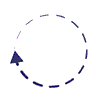The new CCTV: guarantee cybersecurity and take advantage of the benefits provided by the cloud
July 21, 2019

July 21, 2019

Interview with José Ignacio Sainz Macías, Director of Sales and Business Development of Eagle Eye Networks for Iberia
The evolution of CCTV has been continuous since its appearance in the 40s for the observation of the launching of rockets. The recording in video tapes and later in hard disks, the transition to IP, the video analytics, the hybrid recorders and, more recently, the new technologies of HD over coax, are some examples of that evolution.
However, in recent years, the video surveillance sector has become drastically commoditized. There has been an increase in competition, offering similar products without any added value, which has led the CCTV market to a price war. The same project is today around 80% cheaper than 5 years ago, which forces us to multiply by 5 the productivity to achieve the same return as 5 years ago.
Also, in a price war there are no winners, not even the end customers. When selling very cheap solutions, many CCTV manufacturers have not paid attention to the cybersecurity, durability, operation, maintenance and support of their products, with the consequent impact on the end customer who does not see their needs met.
We are at a crossroads, since the end customer has needs that are not covered by traditional CCTV solutions, but most installers are too busy in their price war, to stop to analyze the needs of their customers or look for innovative solutions that allow them to reduce costs and differentiate themselves from their competitors.
This is not the time to look for blame or complain, but to ask yourself a series of important questions: Is this situation sustainable? What I can do? Where should I go?
Traditional CCTV solutions based on DVRs do not seem to be the answer in the short or medium term as they do not provide differentiation, they have many limitations for the end customer and require a great economic effort from installers at the installation, maintenance and support level : installation of hardware and software in the client’s home, recurring software updates to cybersecurity vulnerabilities or new functionalities, need to open ports in the client’s home, complexity of access to the recordings, need for additional hardware before changes in the installation. To all this, we must add the reduction in durability of the HW, the lack of software updates after a while, the limited number of concurrent sessions in a DVR,
In recent years there has been much talk of the benefits of video surveillance solutions in the cloud, but beware, everything that glitters is not gold. Most of these solutions are very basic and with limitations. They are cameras with a special firmware that connect directly to an internet router at the client’s home and send the video to the cloud, but: What happens if the internet falls? How do I manage the internet upload bandwidth for various types of traffic? Is the content encrypted? What happens if the client changes the internet provider? Where is the cloud? What level of certification does that cloud have? Can I record continuously? What redundancy do they offer me? How many cameras and models does the solution support? Does it support other technologies besides IP? How do I guarantee cybersecurity? Can I run analytical video on any camera? Getting answers to these questions is essential when analyzing each solution. Many simply hide behind using the AWS cloud, Microsoft Azure, or Google Cloud, but this is no guarantee that the solution is optimal. Normally only recording by events is allowed, with a limited number of events per day and also limitations in FPS and maximum bitrate per camera. Storing video requires many GBs, it is not the same as storing some words or pdfs documents that are a few MBs…
Covered on these news sites. Click image to read more.

Comcast Smart Solutions is partnering with Eagle Eye Networks to enhance security at a youth crisis center campus in Jacksonville, Fla HILADELPHIA — Comcast Smart Solutions, a division of Comcast…
January 29, 2025
Blue Eye’s integration with Eagle Eye Networks brings proactive remote video monitoring to the forefront, improving security and reducing the need for manual monitoring. Blue Eye, a provider of remote…
January 29, 2025
The police in Fenton, Mich. are leveraging AI-powered video surveillance from Eagle Eye Networks to combat rising retail theft. FENTON, MI – The Fenton Police Department is using artificial intelligence…
January 25, 2025